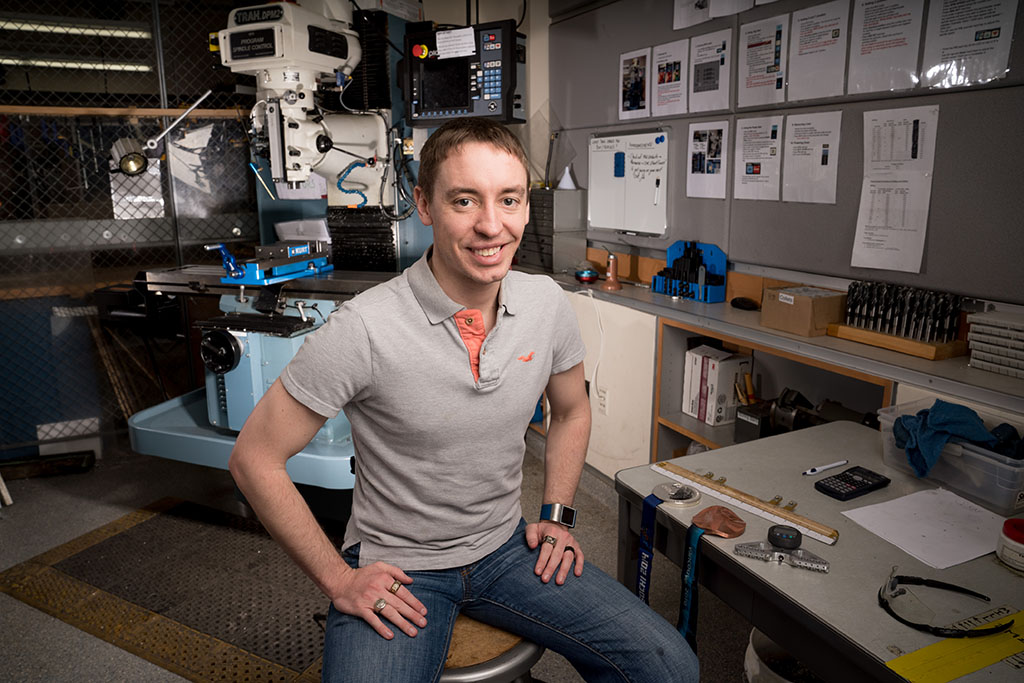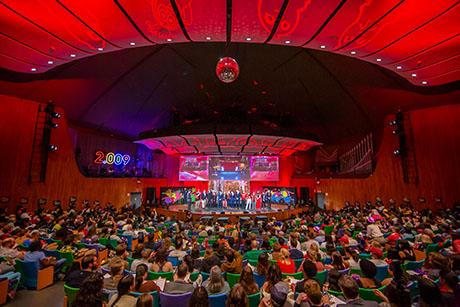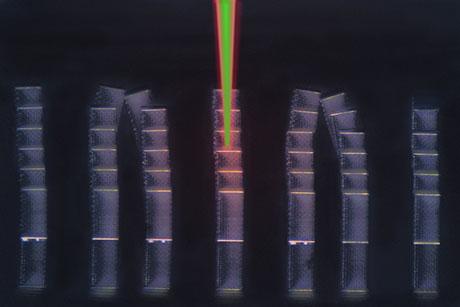On the cutting edge
When Jordan Malone’s mother told him his passion for playing with LEGOs might translate into a passion for engineering, the young Denton, Texas, native made it a goal to study engineering at MIT. In the coming years, he committed himself to making that goal a reality — a level of dedication that also earned Malone a bronze medal in the 2010 Vancouver Winter Olympics and a silver medal at the 2014 Sochi Winter Olympics, for short-track speedskating.
“Before I ever wanted to be an Olympian, I knew that I wanted to be an engineer. And if you want to be the best, you’ve got to train with the best,” Malone says. The MIT senior studies mechanical engineering and hopes to draw from both his education and his speedskating experiences to improve the sport in the future.
Although Malone set his sights on MIT at an early age, his love for skating took him on a significant detour along the way. He transferred to MIT in 2015 from the University of North Texas after a 25-year career in the sport. Malone had put his engineering education on hold to prepare for the Sochi Winter Olympics, and he officially retired from the sport in 2014.
He now credits his life experiences with enhancing his education at the Institute. “Maybe I was always meant to be an MIT engineer,” Malone says, “and I needed to wait until I was capable.”
“The amount of uncertainty about what I want to do with my life has curved down to null numbers,” he says. “I’m not just here taking courses and gathering credits, I’m here assembling a skill set.”
Meaningful measurements
Malone’s major is Course 2A, which has a customizable curriculum that allows students to home in on their personal interests. This semester, he is enrolled in 2.996 (Advanced Topics in Mechanical Engineering) with professor of mechanical engineering Martin Culpepper. With Culpepper’s guidance and mentorship, Malone is developing a device that more precisely measures the curvatures of the blades used for speedskates. Though such “rocker gauges” already exist, Malone is designing a machine capable of greater precision and accuracy.
When the blade curvatures are off target, there are consequences for skaters on the ice. “If [the curvature] is 0.0003 inches off, when I start getting up to top speeds, I’m like, ‘Something’s wrong!’” Malone says. If it’s off by more: “Mayday! I can’t skate now — just can’t operate.”
This firsthand experience is an asset for Malone as an engineer. “One of the benefits I have is that I know the problem really well, and I’m learning the engineering that will help me fix that problem. … The need for precision and accuracy has far surpassed the instruments that we use to measure and map the blades.”
As part of his engineering education, Malone is currently enrolled in 2.671 (Go Forth and Measure), a class centered around making accurate and precise measurements in a wide range of applications. “It’s one of the classes that has let me take what I learn in class and apply it immediately toward skating,” Malone says. He enjoys breaking down his project with Culpepper for other undergraduate students in 2.671 who are pursuing projects in different areas. “It’s good to be able to sit down and understand what [knowledge of the problem] I’m taking for granted and what I’m glossing over.”
Part of the problem for skaters, Malone says, involves the way the blades are manufactured and prepared for competition. Currently, blades are shaped by a template, and then individually sharpened by hand by skaters and their coaches.
“The chance of hitting the exact numbers [of curvature needed, by manually sharpening,] are slim to none,” Malone says, “and you’re either going to exhaust yourself or you’re going to have to give up and say, ‘Okay, that’s as good as it’s going to get.’ And the second you step onto the ice, you know in your head it’s not exactly perfect.”
Though Malone is working on improving the instrumental measurements of blades, he also hopes to design a machine that shapes blades accurately and automatically during the manufacturing stage, limiting human error. Malone says he recognizes that the problems he’s tackling aren’t new.
“It’s not like I’m the first person that’s been able to come along and do this, but I’m probably the first person who has a decent enough knowledge of the problem, who has the knowledge of how to fix it, and who cares enough to put myself through the troubles of doing that,” Malone says. “Some of the people who are able to solve problems are just not concerned enough. For me, I have a real, personal stake in it.”
Critical mentorship
Before applying to transfer to the Institute, Malone toured campus with speedskater and MIT alum Hajime Sano ’82. During his visit, Malone met with Anette “Peko” Hosoi, the Neil and Jane Pappalardo Professor of Mechanical Engineering, and Alexander Slocum, the Walter M. May and A. Hazel May Professor of Mechanical Engineering.
During his, Malone recalls being asked to perform a back-of-the-envelope calculation for the return-on-investment for solar panel installation, given a few initial parameters. “Nineteen-year-old me would have probably been very scared,” Malone says with a chuckle, “but the 30-year-old me — it made me hungrier.”
One successful calculation and one successful application process later, Malone was enrolled at MIT and sitting in Hosoi’s seminar on sports technology. The course, co-taught by lecturer Christina Chase, led Malone to work further with the two instructors, who have served as his mentors. “They are there to enable you and to provide feedback,” Malone says. “But they definitely won’t hover over you. It’s really good, because that’s my style.”
With the guidance he receives from Culpepper, Hosoi, and Chase, Malone says, “I feel like I have an open door for progress.” Malone notes that this mentorship has helped him focus his interests. “Without guidance, I could go down a thousand different routes, but with the help of a few people, I can limit that to five or 10,” Malone says.
Empowerment
Malone says the resources at MIT for students help enable innovation.
“If you’re looking for help with one thing, you won’t necessarily find it in one spot. You’ll find it in multiple spots,” Malone says as he recalls his current efforts to fund his blade curvature measurement project. “MIT is about enabling you. They’re not going to hover over you and make sure you get anything done. They’re going to amplify what you choose to get done,” he says.
In the future, Malone hopes to help optimize and implement new wireless athlete-tracking technologies that don’t require wiring and cumbersome installations, unlike currently used technologies such as passive radio-frequency identification tags. He aims to bring this technology to speedskating.
“I think I’m well-suited for that. I speak enough of both languages — to be able to explain to the athletes what’s possible and to be able to explain to the engineers what’s necessary and what’s relevant,” Malone says.



